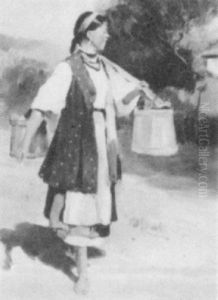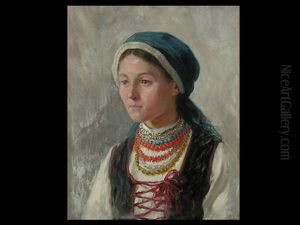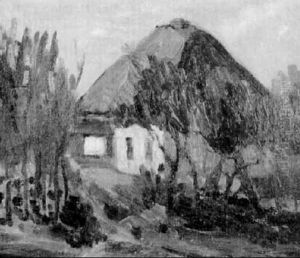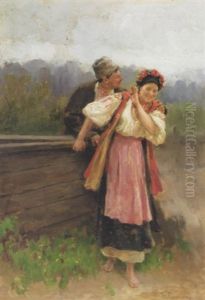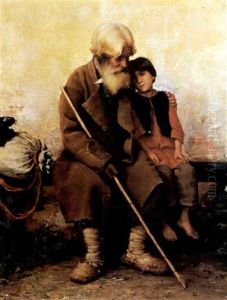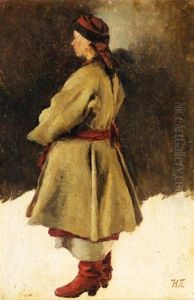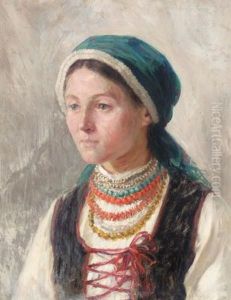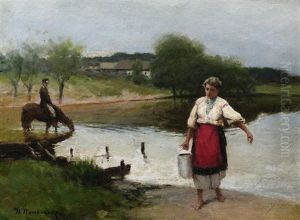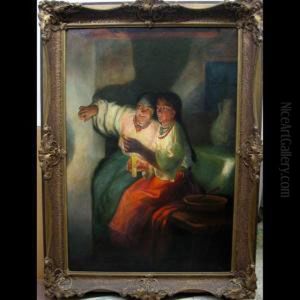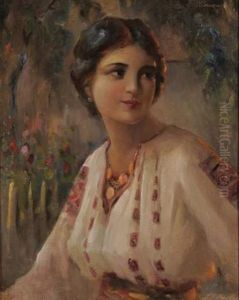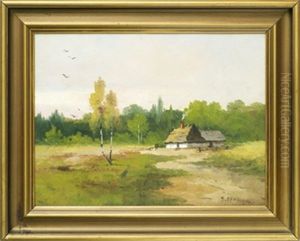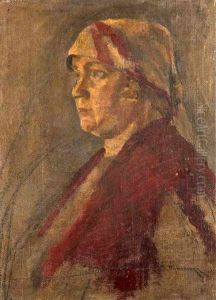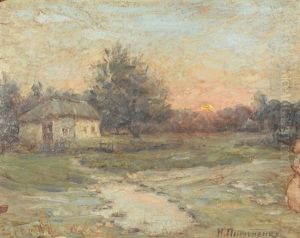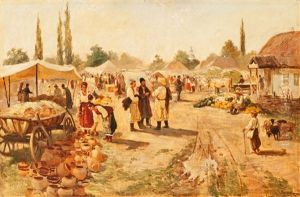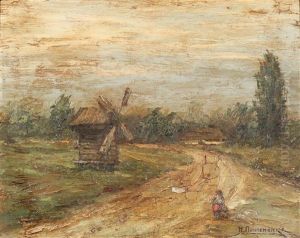Nicolai K. Pimonenko Paintings
Nicolai Krymovich Pimonenko was a distinguished Ukrainian painter born on November 9, 1862, in the village of Priorka near Kiev. He was born into a family of icon painters, which helped him develop an interest in art from an early age. Despite the humble background, his talent in painting was recognized early on, and he went on to study at the Kiev School of Art before moving to the Imperial Academy of Arts in Saint Petersburg.
During his time at the Academy, Pimonenko was awarded several medals for his work, including the prestigious gold medal for his painting 'Sorochintsy Fair' in 1889, which allowed him to travel abroad to further his artistic education. His travels took him to various European countries, including Germany and France, where he was exposed to different artistic styles and techniques.
Pimonenko's oeuvre is often characterized by his vivid and detailed depictions of Ukrainian life and customs, as well as historical genre scenes. His works are known for their narrative quality, often telling stories about the daily lives of people, their festivities, and their traditions. He was particularly interested in the lives of peasants and depicted them with warmth and empathy. A notable example is his work 'The Beggar' (1889), which shows a compassionate view of the less fortunate in society.
Pimonenko's work was well-received during his lifetime. He was a member of the Peredvizhniki (Wanderers) movement, a group of Russian realist artists who formed an artists' cooperative in protest of academic restrictions. His affiliation with this movement further influenced his style and thematic choices.
Nicolai Pimonenko's career was relatively short but impactful. He taught at the Kiev School of Art and was an influential figure in the development of Ukrainian national art at the turn of the 20th century. Unfortunately, his life was cut short when he died on March 26, 1912, in Kiev. His legacy continues to be celebrated in Ukraine and Russia, where his paintings are held in high regard, and he is considered one of the key figures of Ukrainian national art.
